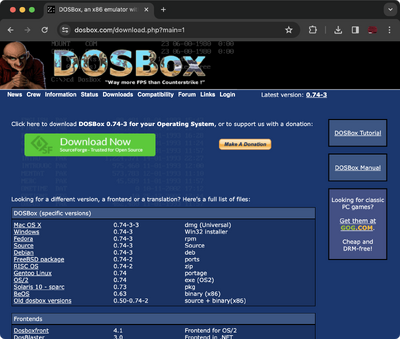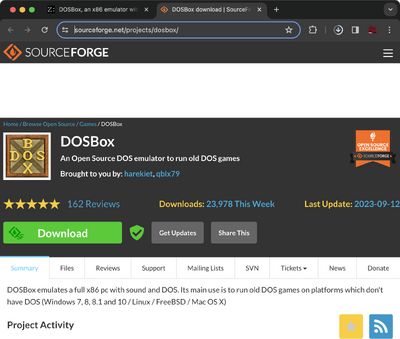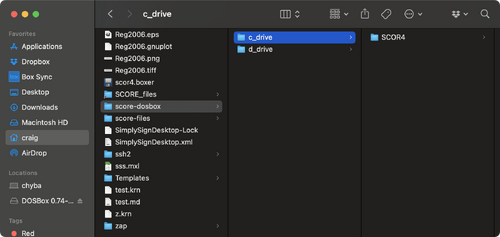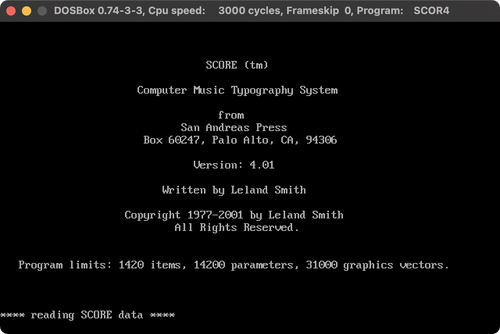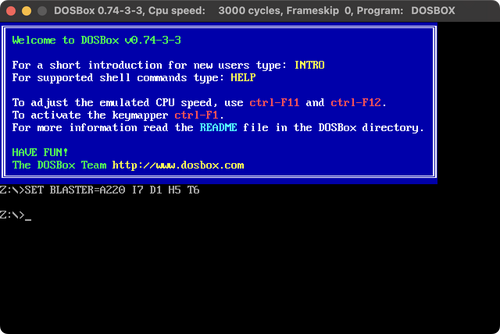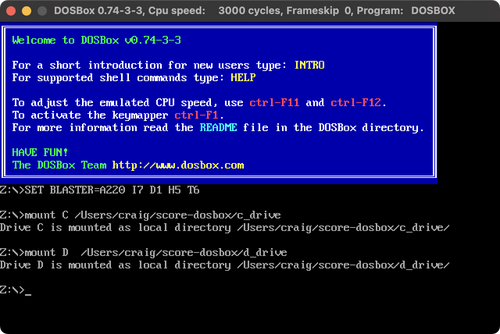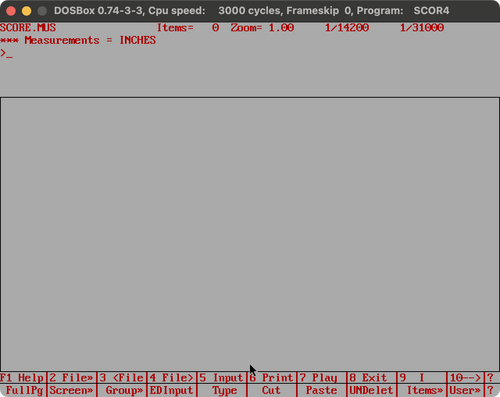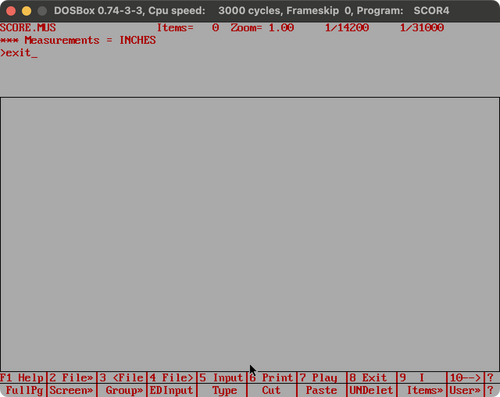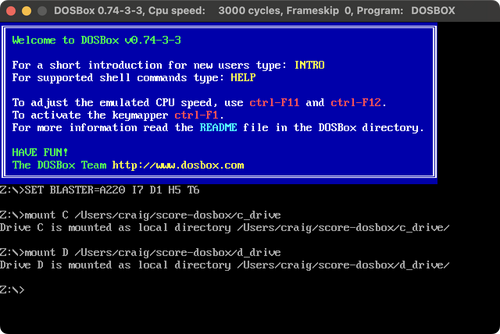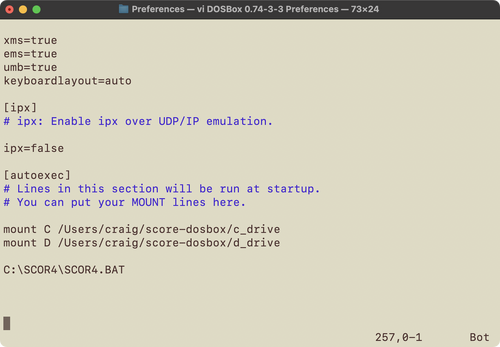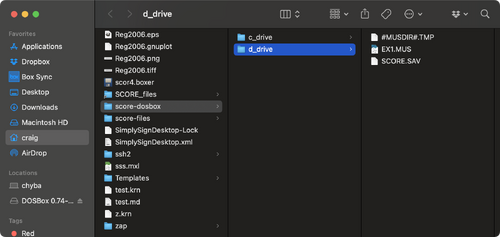Using SCORE in DosBox
Contents
Windows installation
Installation should be nearly identical to installing in MacOS, so tell me if there are any significant differences.
MacOS installation
Download and install DosBox
- Install DosBox for Mac OS X version 0.74-3-3 dmg (Universal) from the download page of DosBox: [1]
- The Mac OS X link takes you to sorceforge [2] to download the application:
- Open the downloaded dmg file:
- The following files will be displayed. Copy the DOSBox.app program to "/Applications" or "~/Applications".
Download SCORE files
- Unzip the SCORE zip file and store where you want it to be stored. It should be able to go anywhere such as in your home directory, the Desktop, or a class-related folder. I would avoid having the full path contain any spaces, which could potentially cause problems. I place it at "/Users/craig/score-dosbox". (i.e., in the home directory).
- Run score by typing without quotes: "c:\scor4\scor4.bat". You should then see the SCORE splash page:
Run DosBox
- Note that there may be access permissons required the first time DosBox is run (so accept any security permission requests).
- Open the DosBox app (double click on "/Applications/DOSBox.app" or put in your Dock). You should see this view after a brief splash page:
- Make note of where you installed the score-dosbox directory/folder. There are two directories that need to be connected to DosBox as the C: and D: drives. For me the C: drive is /Users/craig/score-dosbox/c_drive, and the D: drive is /Users/craig/score-dosbox/d_drive.
- You need to type these two commands in DosBox:
mount C /Users/craig/score-dosbox/c_drive
and
mount D /Users/craig/score-dosbox/d_drive
- Now you can start score with the command:
c:\scor4\scor4.bat
and you should see the SCORE splash page:
Press the space bar (or any key) to skip the splash page faster.
- You will end up in the SCORE editor after the splash page is closed:
- You can type "exit" (then the return key) to close score and go back to the initial DosBox window:
Preference file
- You can automatically mount the C: and D: drives by adding these lines at the bottom of "/Users/craig/Library/Preferences/DOSBox 0.74-3-3 Preferences":
mount C /Users/craig/score-dosbox/c_drive mount D /Users/craig/score-dosbox/d_drive
(This should be in the "[autoexec]" options region.). After adding this, the mounting commands will be done automatically when opening DosBox:
- You can also add the command "C:\SCOR4\SCOR4.BAT" to the preference file after the mount commands to automatically start SCORE when DosBox is opened:
- Note that you must use back-slashes (\) and not forward slashes (/) for the command to start SCORE.
Continue
- Go to SCORE user input to start entering the first SCORE exercises.
- Also refer to the SCORE survival guide for step-by-step instructions on how to enter the exercises.
- When you save files, they will be placed in the /Users/craig/scores-dosbox/d_drive directory (at least for me). You can view the files in the Finder at the same location:
The files "#MUSDIR#.TMP" and "SCORE.SAV" are temporary files that SCORE uses. The file "EX1.MUS" is a binary file that stores the music notation prepared in SCORE.
- You can create readable ASCII versions of MUS files in SCORE by using the PMX command. Also you can use a command-line tool to convert binary MUS files into ASCII PMX (parameter maxtrix files), both show the internal format of the musical data which contain rows of numbers, each row representing a particular musical object on the page.
